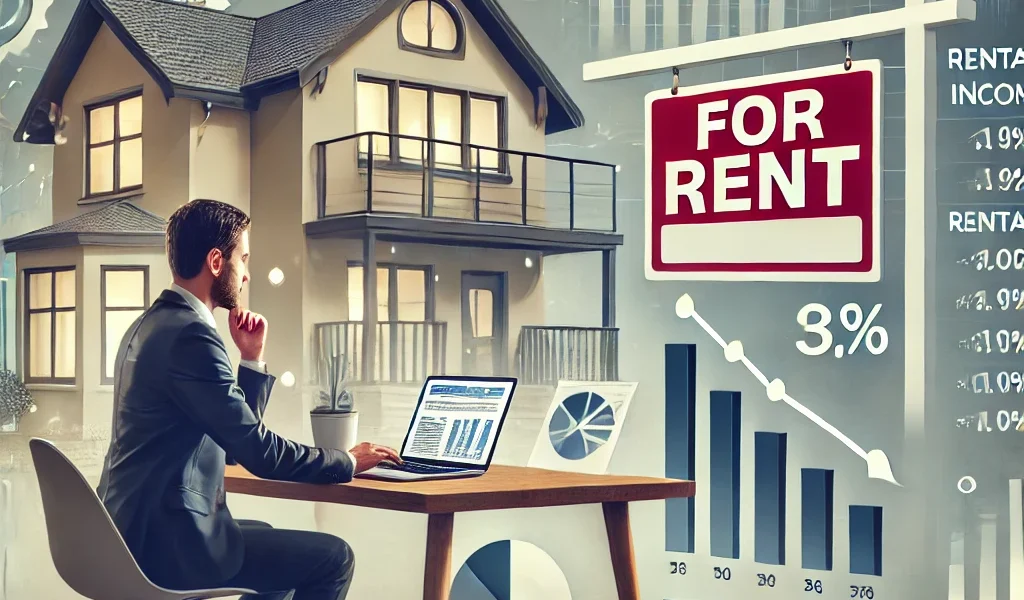IIntroduction
Investing in rental properties can be a lucrative way to build wealth, but success depends on one crucial factor: Return on Investment (ROI). Understanding how to analyze ROI helps investors make informed decisions, avoid costly mistakes, and maximize profits. Whether you’re a seasoned investor or a beginner, this guide will walk you through the essential steps to analyze rental property ROI like a pro.
What is Rental Property ROI?
ROI, or Return on Investment, measures the profitability of a rental property relative to the investment cost. It is a key metric that helps investors determine whether a property is a good investment. A high ROI indicates a profitable investment, while a low ROI may signal financial risk.
However, real estate ROI calculations can be more complex, considering factors such as financing, operating expenses, and market conditions.
Key Metrics to Evaluate Rental Property ROI
1. Cash Flow
Cash flow is the money left after paying all expenses, including mortgage, property management, taxes, insurance, and maintenance.
A positive cash flow means the property generates income, while a negative cash flow indicates losses.
2. Cap Rate (Capitalization Rate)
Cap rate measures the property’s return based on its value, providing insight into profitability without financing considerations.
A higher cap rate often means better returns but may come with higher risk.
3. Cash-on-Cash Return (CoC Return)
CoC Return evaluates cash flow relative to the cash invested, crucial for investors using financing.
A higher CoC Return is ideal, indicating better returns on invested capital.
4. Gross Rent Multiplier (GRM)
GRM helps compare different rental properties quickly by assessing value relative to income.
A lower GRM suggests a better investment opportunity.
5. Debt Service Coverage Ratio (DSCR)
For financed properties, DSCR evaluates income sufficiency for mortgage payments.
A DSCR above 1.2 is preferable, indicating strong financial health.
Step-by-Step Guide to Analyzing Rental Property ROI
Step 1: Determine Rental Income
- Research comparable properties to estimate monthly rent.
- Consider vacancy rates to adjust expectations.
- Account for potential rental increases over time.
Step 2: Calculate Operating Expenses
Typical expenses include:
- Property taxes
- Insurance
- Maintenance and repairs
- Property management fees
- HOA fees (if applicable)
A good rule of thumb is the 50% Rule—half of the rental income should cover operating expenses (excluding mortgage).
Step 3: Analyze Financing Costs
- Include mortgage payments (principal + interest)
- Factor in loan origination fees and closing costs
- Consider refinancing options for better terms
Step 4: Compute Net Operating Income (NOI)
A higher NOI indicates better profitability.
Step 5: Calculate Key ROI Metrics
Use the formulas above to assess:
- Cap Rate
- Cash-on-Cash Return
- DSCR
- GRM
Step 6: Assess Market Trends and Risks
- Research job growth, population trends, and local demand.
- Consider potential risks such as economic downturns, tenant defaults, and property depreciation.
Example ROI Calculation
Let’s analyze a rental property with the following details:
- Purchase Price: $250,000
- Down Payment: $50,000
- Monthly Rent: $2,000
- Annual Operating Expenses: $12,000
- Mortgage Payment (Annual): $14,000
Step 1: Calculate Annual Rental Income
Step 2: Compute NOI
Step 3: Calculate ROI Metrics
- Cap Rate:
- Cash-on-Cash Return: (negative return due to financing costs)
Common Mistakes to Avoid When Analyzing ROI
1. Ignoring Hidden Costs
- Unexpected maintenance, vacancies, and legal fees can impact ROI.
2. Overestimating Rental Income
- Conduct thorough market research to set realistic rent prices.
3. Failing to Account for Vacancy Rates
- Assume at least 5-10% vacancy when calculating ROI.
4. Underestimating Expenses
- Use conservative estimates to avoid financial strain.
5. Ignoring Market Trends
- Analyze demand, economic conditions, and property appreciation potential.
Final Thoughts
Analyzing rental property ROI is essential for making smart investment decisions. By evaluating key metrics such as cap rate, cash flow, and cash-on-cash return, investors can confidently determine the profitability of a property.
Real estate investing requires due diligence, accurate financial analysis, and market research. By mastering these calculations, you can invest like a pro and build a profitable rental property portfolio.




